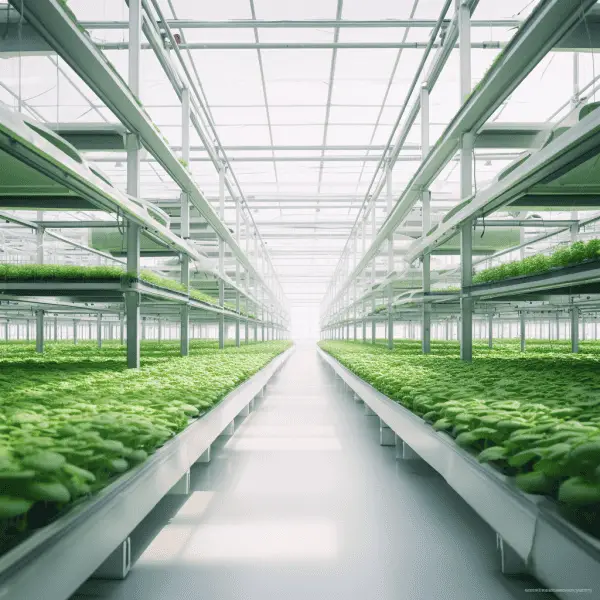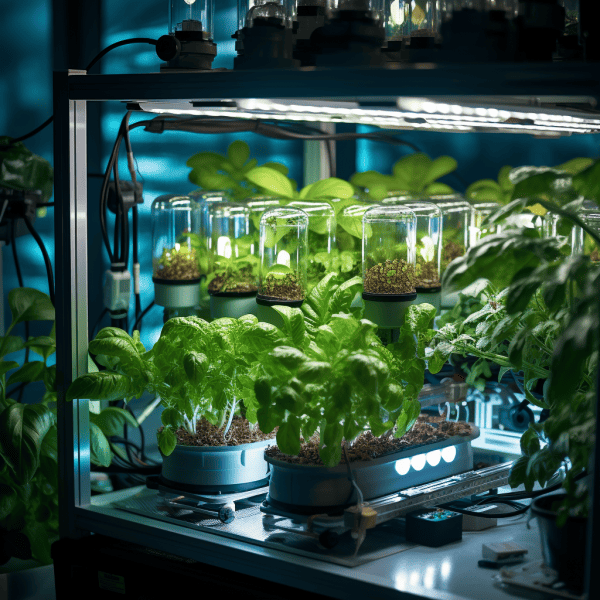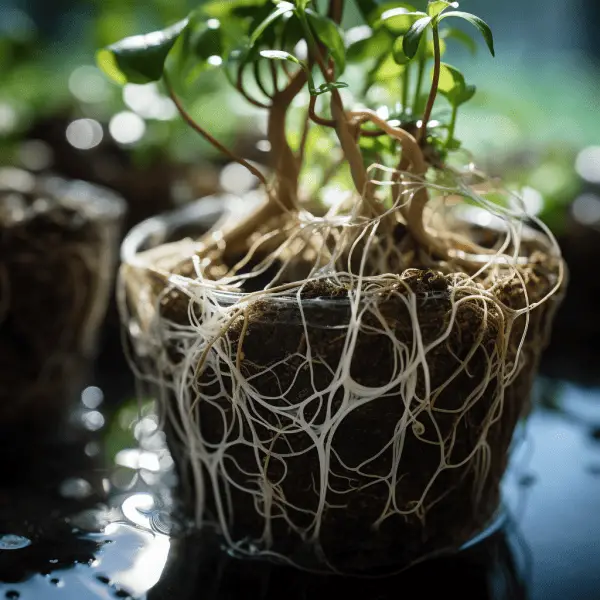Hydroponics is a way to grow plants without soil.
It uses water and nutrients instead.
Net pots are super important for hydroponics.
What is the vital role of net pots in hydroponics?
They hold the plants in place.
I learned this from my own experience.
When I first started hydroponics, I did not use net pots.
Big mistake! My plants kept falling over without the support.
Now I always use net pots.
Here are some tips and facts about using them.
Net pots come in many sizes.
Choose one just a bit bigger than the plant’s root ball.
This keeps the plant steady.
Too big and it will wobble.
Too small and the roots get cramped.
Go for a snug fit.
Net pot material matters too.
Plastic, felt, and mesh pots each have pros and cons.
Plastic lasts the longest.
Felt is gentlest on roots.
Mesh offers the best airflow.
Pick what suits your plants best.
Use net pots filled with clay pellets or perlite.
This lets roots breathe while holding moisture.
Make sure the bottom sits in your system’s water.
Roots will grow right through! With good net pots, your plants will thrive.
Keep reading to learn more tricks for hydro success.
KEY TAKEAWAY
What is the role of net pots in hydroponics?
Net pots (1) play a crucial role in hydroponics by providing support and aeration to plant roots, allowing for efficient nutrient uptake.
They are essential for the success of hydroponic systems, promoting healthy plant growth and maximizing yields.
Benefits of Using Net Pots in Hydroponics
Net pots are a hydroponic game changer.
These little containers offer some big bonuses for your indoor garden.
For starters, net pots give baby plants support.
Their tender stems often need help standing up straight.
Net pots prop them up nice and tall.
No more floppy seedlings! Net pots also let you move plants easily.
Just lift the net pot out and plop it in a new spot or system.
No messy transplanting required.
Another benefit is aeration.
Net pots have openings that allow air flow to the roots.
Roots need to breathe! Trapped moisture can cause disease.
The nets prevent this.
Speaking of disease, net pots reduce mold risk.
With soil, wet spots can get moldy.
But net pots drain well and have no soil to get soggy.
Less mold means healthier plants.
Finally, net pots simplify maintenance.
You can refresh media or check roots without uprooting the plant.
Just reach right into the net pot and tweak things.
So handy!
Net pots might seem like a small detail but they make hydroponics way easier.
Give them a try and see for yourself!
Keep reading for more tips on maximizing these handy helpers.
Enhancing Plant Growth with Net Pots

Net pots boost your plants (2) in all stages of growth.
As seedlings, they keep stems upright and air flowing to young roots.
This kickstarts healthy development.
Net pots give them the best start! As plants mature, net pots provide anchor and stability for larger root systems.
Plants can focus energy on growing big instead of staying balanced.
The openings in the pots continue circulating air around older roots.
Good airflow prevents diseases that could slow growth.
So plants just keep on thriving! For bigger plants, use larger net pots or even double them up.
This lets roots spread out comfortably.
Remember to water and feed according to the full root mass, not pot size.
With room to expand, plants grow to their full potential in net pots!
Preventing Disease and Ensuring Plant Health

The drainage and aeration of net pots is key for plant health.
When roots sit in moisture, they suffocate and get root rot.
This quickly spreads disease to the whole plant.
Net pots prevent wet roots by letting excess water drain out.
Their openings bring in fresh air too.
Together this stops many harmful root problems before they start.
Net pots also make it easier to catch issues early.
Keep an eye on roots and media through the netting.
If anything looks off, you can take action.
Refresh the media, increase airflow, or treat disease right away.
With plastic or solid pots, issues are hidden until serious damage occurs.
But net pots allow close monitoring and quick fixes.
Keep your crop thriving with these disease prevention powerhouses!
Ease of Plant Management and Maintenance
Net pots simplify so many hydroponics chores.
Their open tops provide easy access to plants’ root zones.
No need to disturb the whole plant to refresh media or nutrients.
Just pour new materials right into the net pot.
The openings allow old media to pour out too.
When roots get long, carefully trim through the netting.
Pruning, training, and harvesting is a cinch too.
Reach right into the net pot and access the plant.
Net pots also make moving and rearranging plants mess-free.
Lift them out and rearrange anytime.
Transferring systems? Bring net pots along and skip transplant shock.
They even make great seed starters.
Plant seeds directly in net pots! No transplanting needed once roots take hold.
With net pots streamlining so many tasks, you gain time to focus on the fun stuff – watching your garden grow!
Sustainability and Recyclability of Net Pots
Plastic net pots are reusable and recyclable, making them a sustainable choice.
After each crop cycle, sterilize net pots in a bleach solution to kill any lingering diseases.
Let them fully dry and they are ready to be reused – no waste generated.
At the end of their lifespan when net pots get brittle, recycle them with other plastics.
Just rinse out any media first.
Some gardeners even opt for biodegradable pots made of materials like rice husks, coir, or straw.
These break down at the end of the season when added to compost piles.
Avoid flimsy paper pots – they fall apart when wet.
For a plastic-free and sustainable option, look for sturdy molded fiber net pots.
With proper care, net pots pull their weight for the planet.
Choosing the Right Net Pot Size for Hydroponics
Selecting the perfect net pot size may seem tricky but following some guidelines makes it easy.
Match the net pot diameter to the size of your plant’s root ball.
For seedlings, opt for 2-3 inch starter pots.
This gives their small roots support without excess space.
Move up to 4-6 inch pots once roots have established and plants are actively growing.
Larger vegetables and fruiting plants need more space.
Go for 8-12 inch pots depending on the plant size.
Make sure to leave some headroom for roots to continue spreading.
A good rule of thumb is choosing a pot 2 inches wider than the root ball.
This prevents tangling and circling roots.
However, don’t size up too early – excess moisture in large pots can lead to disease in young plants.
Pay attention to pot height too.
Standard net pots are about as deep as their width.
For plants with long taproots like tomatoes, use deeper pots.
This prevents circling and stunted growth.
Also consider pot material and density.
Plastic lasts the longest but finer mesh promotes better aeration.
Sturdy, dense nets are best for larger, heavier fruits and vegetables.
With the right net pot size for each plant, your hydro garden will thrive!
Alternative Options to Net Pots in Hydroponics
While net pots are a hydroponic favorite, some other containers can work too.
Mason jars are a popular DIY option.
Just fill with media, plant seedlings inside, and you have mini hydro systems! If using jars, make drainage holes in the lids and use grow lights to prevent algae.
Colanders, strainers, and hanging baskets lined with landscape fabric also mimic net pots.
For larger plants, five gallon buckets with lids work well.
Cut a hole in the lid, fill with media, and insert the plant.
Just be sure buckets are food-grade, not treated with chemicals.
Air pots brand containers are interesting plastic pots with ridges that create air channels along the roots.
These are pricier but claim to enhance aeration and growth.
In the end, simple, affordable net pots tend to be the best hydroponic vessel.
But if you’re feeling creative, try an alternate style!
How to Properly Use and Maintain Net Pots
Using net pots takes a little care but pays off with thriving plants.
Start seeds or cuttings directly in net pots filled with media.
Perlite, vermiculite, coconut coir, and clay pebbles all work.
Keep media moist until seeds sprout or roots form.
Then, place net pots into your hydro system, with the bottom immersed in nutrient water.
Roots will soon grow out of the netting seeking water.
Make sure they always have access! Top off reservoirs frequently and raise pots as plants grow taller.
Also monitor pH and nutrient levels in the water.
Refill nutrients every 1-2 weeks, changing out the whole reservoir monthly.
Keep an eye on roots as they fill pots.
Carefully trim any circling or tangled roots that could choke the plant.
Clean net pots between uses to prevent disease.
Soak in a 10% bleach solution for 15 minutes, then rinse well.
Allow pots to fully air dry before reusing.
Replace any pots that become brittle or develop large holes.
And replace media like clay pebbles annually for best results.
Proper net pot maintenance prevents problems down the road.
Follow these tips and your net pots will support plant growth for years!
Using Net Pots for Starting Seeds and Transplanting
As hydroponic tools, net pots are great for starting seeds and cutting.
Fill them 3/4 with media like perlite or vermiculite.
Gently press seeds into the media and sprinkle more on top to cover.
Mist well until sprouted.
For cuttings, poke a hole and insert the stem.
Roots will soon grow out the bottom into water.
Once seedlings or rooted cuttings are established, transplant the entire net pot into larger pots or hydro systems.
This prevents disturbing fragile new roots.
Starting plants this way eliminates transplant shock.
Use 2-3 inch net pots for starters, then size up as plants grow.
Mini neoprene collars around the stem help support top-heavy seedlings too.
When moving plants to a new system, carefully lift out the net pots.
Keep media intact around the roots.
Place directly into the new hydro setup.
Pour new media around gaps if needed.
Then monitor closely.
Plants may droop for a day or two as roots adjust but will quickly perk up again.
With net pots streamlining seed starting and transplanting, your plants get the best start!
Conclusion
Thanks for reading this guide! I hope these net pot tips help you grow big healthy plants.
Hydroponics takes practice but it is worth it.
Comment below if you have questions.
And share this article if it helped you.
Do not forget to check my other guides for more ways to master hydroponics.
Growing indoors lets you enjoy lush plants year-round.
Apply what you learned here about net pots and watch your garden flourish! Now go give your plants some love.
Happy growing!
References
- https://ponicslife.com/hydroponic-net-pots-everything-you-need-to-know/#:~:text=%E2%80%9CNet%20pots%E2%80%9D%20are%20miniature%20plastic,through%20your%20plant’s%20roots%20simultaneously.
- https://hydroponicway.com/reasons-for-using-net-pots-for-hydroponics/
Related Articles
Was this helpful?

Crystal Erickson is an agriculture enthusiast and writer with a passion for sustainable farming practices and community development. Growing up on a family farm in rural Iowa, Crystal developed a love for the land and a deep appreciation for the hard work and dedication required to make a farm successful.
After completing a degree in Agriculture and Environmental Science from Iowa State University, Crystal began her career as an agricultural journalist, covering stories and issues related to modern farming practices, crop management, and livestock production. She quickly established herself as a respected voice in the industry, known for her insightful reporting and thoughtful analysis.
Over the years, Crystal has written for a variety of publications, including Farm Journal, Successful Farming, and Modern Farmer, as well as contributing to several academic journals focused on sustainable agriculture and community development. Her work has been recognized with numerous awards, including the Iowa Farm Bureau’s Young Farmer Achievement Award and the National Association of Farm Broadcasting’s Farm Broadcaster of the Year.


